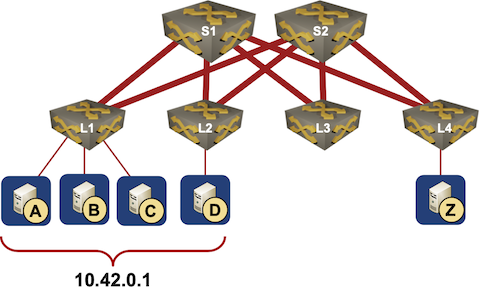Multi-cloud is more about Tibco, SAP, Salesforce, Oracle etc than GCP/AWS/AZR.
 Off prem cloud has hype
Off prem cloud has hype
 Off prem cloud has hype
Off prem cloud has hype
It’s here! Ready or not, DockerCon — our free, one-day, all-digital event designed for developers by developers — has arrived. Registration is open until 9 a.m., so if you haven’t already done so, go ahead and sign up!
This is your chance to learn all you can about modern application delivery in a cloud-native world — including the application development technology, skills, tools and people you need to help solve the problems you face day to day.
Final reminders: Don’t forget to catch our line-up of keynote speakers including Docker CEO Scott Johnston, and to bring your questions to Live Panels hosted by Docker Captain Bret Fisher, as well as our two developer-focused panels and Hema Ganapathy’s women’s panel. Just put your questions on selected topics in chat, and the team will do their best to answer them.
If you still need guidance on what to focus on, here’s a reminder of what not to miss. And don’t forget to come celebrate our global community in Community Rooms — a first at DockerCon.
That’s it! Now go forth and carpe DockerCon!

DockerCon LIVE 2021
Join us for DockerCon LIVE 2021 on Thursday, May 27. DockerCon LIVE is Continue reading

African economies are making bold moves to speed up digitalization and transformation. We want women to play a key part in that. In a new partnership agreement, we are committing to closing the digital gender gap and helping women embrace technology to drive change. Africa’s growing Internet economy has the potential to contribute nearly $180 […]
The post African Women to Drive Digitalization and Transformation: AfChix and Internet Society Renew Partnership appeared first on Internet Society.
Pete Lumbis and Network Ninja mentioned an interesting Unequal-Cost Multipathing (UCMP) data center use case in their comments to my UCMP-related blog posts: anycast servers.
Here’s a typical scenario they mentioned: a bunch of servers, randomly connected to multiple leaf switches, is offering a service on the same IP address (that’s where anycast comes from).

Typical Data Center Anycast Deployment
Pete Lumbis and Network Ninja mentioned an interesting Unequal-Cost Multipathing (UCMP) data center use case in their comments to my UCMP-related blog posts: anycast servers.
Here’s a typical scenario they mentioned: a bunch of servers, randomly connected to multiple leaf switches, is offering a service on the same IP address (that’s where anycast comes from).

Typical Data Center Anycast Deployment
A trip down memory lane on how things have changed in labbing from using prehistoric switches bought on eBay through emulators that took longer to configure than the labs to the present day solutions that can programmatically build a multi-vendor lab in minutes. Kids today don’t know they are born…..
It’s easy to assume automation can solve anything and that it’s cheap to deploy—that there are a lot of upsides to automation, and no downsides. In this episode of the Hedge, Terry Slattery joins Tom Ammon and Russ White to discuss something we don’t often talk about, the Return on Investment (ROI) of automation.

Of the four new Internet traffic exchange points in Latin America, the most advanced is IXP.GT in Guatemala. It started in November 2019 with three participants. A little over a year later it already had 10. Most are Internet service providers (ISPs), plus the university network. “The IXP is the best thing that happened to […]
The post IXP.GT Improves Speed, Lowers Costs, and Increases Resilience and Security of Guatemala’s Internet appeared first on Internet Society.
With DockerCon just a day away, let’s not forget to give a big THANK YOU to all our sponsors.
As our ecosystem partners, they play a central role in our strategy to deliver the best developer experience from local desktop to cloud, and/or to offer best-in-class solutions to help you build apps faster, easier and more securely. Translation: We couldn’t do what we do without them.

So be sure to visit their virtual rooms and special sessions at DockerCon this Thursday, May 27. With more than 20 Platinum, Gold or Silver sponsors this year, you’ll have plenty to choose from.
For example, check out AWS’s virtual room and the session with AWS Principal Technologist Massimo Re Ferrè at 3:15 p.m.-3:45 p.m. PDT.
And check out Microsoft’s virtual room and any of the three sessions it’s offering — How to Package DevOps Tools Using Docker Containers (3:45 p.m.- 4:15 p.m.), Container-Based Development with Visual Studio Code (4:15 p.m.- 4:45 p.m.), and Supercharging Machine Learning Development with Azure Machine Learning and Containers in VS Code! (4:45 p.m.- 5:15 p.m.).
Or there’s Mirantis’ virtual room and their two Continue reading
We're a good ten years into public cloud as an industry, and cloud operations don't seem to be getting any simpler. Why is that? Is it a problem? If so, can clouds become simpler? Guest Brian Gracely stops by the Day Two Cloud podcast to wrestle with these questions.
The post Day Two Cloud 099: Can Cloud Computing Get Simpler? appeared first on Packet Pushers.


Durable Objects are an awesome addition to the Workers developer ecosystem, allowing you to address and work inside a specific Worker to provide consistency in your applications. That sounds exciting at a high-level, but if you're like me, you might be wondering "Okay, so what can I build with that?"
There’s nothing like building something real with a technology to truly understand it.
To better understand why Durable Objects matter, and how newer announcements in the Workers ecosystem like WebSockets play with Durable Objects, I turned to a category of software that I've been building in my spare time for a few months now: video games.
The technical aspects of games have changed drastically in the last decade. Many games are online-by-default, and the ubiquity of tools like Unity have made it so anyone can begin experimenting with developing games.
I've heard a lot about the ability of Durable Objects and WebSockets to provide real-time consistency in applications, and to test that use case out, I've built Durable World: a simple 3D multiplayer world that is deployed entirely on our Cloudflare stack: Pages for serving the client-side game, which runs in Unity and WebGL, and Workers as the Continue reading
In the previous blog posts in this series, we explored whether we need addresses on point-to-point links (TL&DR: no), whether it’s better to have interface or node addresses (TL&DR: it depends), and why we got unnumbered IPv4 interfaces. Now let’s see how IP routing works over unnumbered interfaces.
A cursory look at an IP routing table (or at CCNA-level materials) tells you that the IP routing table contains prefixes and next hops, and that the next hops are IP addresses. How should that work over unnumbered interfaces, and what should we use for the next-hop IP address in that case?